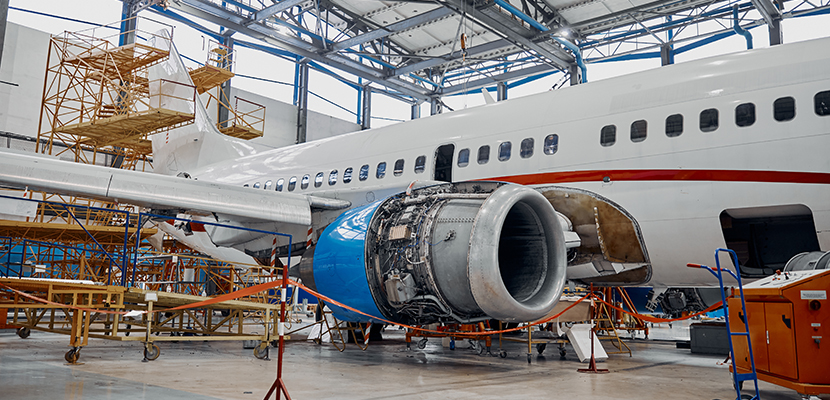Soaring High: The Evolution and Impact of Aerospace Manufacturing on Indoor Air Quality

Taking Flight: A 20-Year Journey in Aerospace Manufacturing
The aerospace industry has always been at the forefront of technological innovation, with manufacturing applications evolving dramatically over the past two decades. From the early 2000s, where manual labor and traditional machining were the norms, we’ve seen a shift towards automation, additive manufacturing (3D printing), and advanced composite materials. These advancements have not only streamlined production but also significantly improved the quality and performance of aerospace components.
For instance, the integration of computer-aided design (CAD) and computer-aided manufacturing (CAM) has revolutionized the precision and efficiency of production lines. Additive manufacturing, once a futuristic concept, is now a reality, allowing for the creation of complex parts with reduced material waste. According to a report by Deloitte, the aerospace sector has embraced these technologies to reduce costs and improve the sustainability of operations.
Breathing Easy: Impact on Indoor Air Quality
As aerospace manufacturing has advanced, so have the concerns about indoor air quality (IAQ) in manufacturing facilities. The processes involved in machining, welding, and composite material fabrication can release a variety of airborne contaminants, including volatile organic compounds (VOCs), particulate matter, and metal fumes.
Studies have shown that poor IAQ can lead to a host of health issues for workers, from short-term respiratory problems to long-term conditions like chronic obstructive pulmonary disease (COPD). With the increased use of advanced composites and additive manufacturing, there’s also the potential release of ultrafine particles, which can penetrate deep into the lungs and cause significant health risks.
Health Risks: The Invisible Threats
The health risks associated with poor IAQ in aerospace manufacturing facilities are manifold. Prolonged exposure to VOCs can cause headaches, dizziness, and even damage to the liver, kidneys, and central nervous system. Particulate matter, especially in the form of ultrafine particles, poses a serious threat as it can trigger asthma, bronchitis, and other respiratory conditions. Metal fumes, often released during welding, can lead to metal fume fever and long-term neurological effects.
Clear Skies Ahead: Mitigating Health Risks
Fortunately, there are several measures aerospace manufacturers can take to minimize these health risks and improve IAQ:
- Ventilation Systems: Investing in high-efficiency ventilation and air filtration systems can significantly reduce the concentration of airborne contaminants. Ensuring regular maintenance of these systems is crucial to their effectiveness.
- Source Control: Implementing source control measures, such as enclosed booths and localized exhaust ventilation, can help capture contaminants at their source before they spread throughout the facility.
- Personal Protective Equipment (PPE): Providing workers with appropriate PPE, including respirators and protective clothing, can offer an additional layer of protection against harmful exposures.
- Regular Monitoring: Conducting regular air quality assessments and monitoring can help identify potential IAQ issues early and allow for timely intervention.
- Training and Awareness: Educating employees about the potential health risks and the importance of IAQ can foster a culture of safety and vigilance within the workplace.
Conclusion
The aerospace industry’s journey over the past 20 years has been marked by incredible advancements in manufacturing technology. However, with these advancements come new challenges, particularly in maintaining good indoor air quality. By understanding the health risks and implementing effective mitigation strategies, aerospace manufacturers can ensure a healthier, safer working environment for their employees, allowing the industry to continue reaching new heights.
Sources:
- Deloitte Insights. (2023). “The Future of Aerospace Manufacturing”.
- Occupational Safety and Health Administration (OSHA). (2021). “Indoor Air Quality in Manufacturing Facilities”.
- Environmental Protection Agency (EPA). (2022). “Health Effects of Ultrafine Particles”.
- National Institute for Occupational Safety and Health (NIOSH). (2020). “Metal Fume Exposure in Welding”.
- American Society of Heating, Refrigerating and Air-Conditioning Engineers (ASHRAE). (2023). “Ventilation for Acceptable Indoor Air Quality”.
- Industrial Ventilation, Inc. (2021). “Source Control Solutions for Manufacturing”.
- National Institute for Occupational Safety and Health (NIOSH). (2019). “Personal Protective Equipment for Manufacturing Workers”.
- Environmental Health Perspectives. (2022). “Monitoring Indoor Air Quality in Industrial Settings”.
- American Lung Association. (2023). “Workplace Air Quality and Employee Health”.
